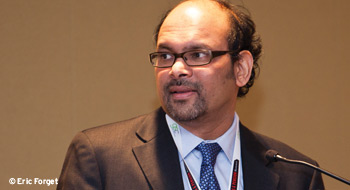

Investing for mid-size plans
Over the past decade, Canada’s biggest pension plans have shifted out of public equities and into alternatives such as real estate, infrastructure and private equity. Can mid-size plans imitate this exposure?
Jason Campbell, an investment consultant with Eckler Ltd., says no. The big plans “have structural advantages that can’t be replicated by a mid-size plan,” such as access to deal flow, the ability to command lower investment fees and even access to cheaper financing.
He believes mid-size plans can get alternative asset exposure but will benefit from “heavy lifting upfront,” which involves finding the right managers. But that’s the outcome of a much longer process that entails identifying both objectives and organizational roadblocks, as well as timing and positioning the transition to a new asset allocation.
Mid-size plans must pick their spot in selecting alternative strategies. Should it be diversifying assets or return-enhancing assets? It’s also important to assess a plan’s capacity to tolerate illiquidity. Some assets require decade-long lock-ups—which also means that the plan is married to its manager—underlining the need for due diligence. Finally, there are the fees.
One way to gain access to an important alternative asset class—real estate—is through a commingled fund approach, suggested Katherine Giordano, a portfolio manager with Aberdeen Asset Management.
It’s sufficiently attractive that one of Aberdeen’s U.K. clients has reallocated its capital from directly held properties to a commingled fund approach. The investor made this decision to achieve greater diversification and to harness the benefits of professional management over a more global portfolio—all without boosting fees.
She estimates that a commingled fund can be had for 30 to 50 basis points, for someone making a sizable commitment.
Fixed income opportunities
Interest rate risk can freeze pension plans like a deer in the headlights. Yet, as Canadian DB plans continue to de-risk their assets and hedge their liabilities, they’ll need to face it head on.
While Canadian interest rates are not far off their long-term average, noted Dany Lemay, a senior investment consultant with Towers Watson, they have wreaked havoc on plan liabilities. Combined with increasing life expectancy and early retirement, these components have made DB plans two to three times more costly than they were in the 1970s.
How can plans create a safety net to protect against funding fluctuations? Most consider their bond allocation their safety net, but it can be a very thin net.
Lemay gave two examples, assuming a pension liability of $100 million. With a plan that is 80% funded and has a 60/40 stock/universe bond allocation, a 1% interest rate fluctuation changes the bond returns by $2.1 million but changes plan liabilities by $15 million (assuming a bond duration of 6.5 and a liability duration of 15).
But if the plan, when it was better funded (e.g., 90%), had shifted its fixed income portfolio from 40% to 50% of total assets and into long bonds, a 1% interest rate fluctuation would change the bond portfolio by $6.3 million, with the liability fluctuation remaining at $15 million. The first case has a 14% interest rate hedge ratio; in the second, it’s 42%.
Clearly, the first plan, and to some extent the second one, has a fairly thin safety net—yet many Canadian pension plans fit one of these two examples.

As a plan moves to match liabilities, there’s no sense in letting money go to sleep, said Patrice Denis, vice-president with PIMCO Canada Corp. If sponsors want to keep their bond duration low, expecting that rates will soon increase, there are ways to exploit the yield curve.
One way is a swaption, which is a customized derivative that commits the buyer to buying at the long end of the curve when rates do go up. In the interim, for the same duration, the investor receives a 3.39% yield instead of the current 2.27%.
There are also opportunities beyond the DEX Universe, particularly in emerging countries. “I want to be exposed to a country that can aggressively cut rates,” said Denis, adding, “If I’m going to lend money, I want to lend it to someone who has the ability to pay it back.”
Scot Blythe is a freelance writer in Toronto. rsblythe@hotmail.com
Download a PDF of this article and other coverage from the 2012 Benefits & Pension Summit.


